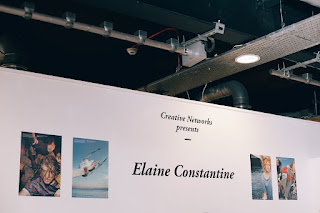To begin this brief I felt I should have some knowledge of the book's content. When I was younger I watched a film adaptation 'Capote', however my memory is hazy and films do not always represent the novel.
The Clutter Family Murders
Two prisoners by the names of Richard Eugene Hickock and Perry Edward Smith were told by a fellow inmate who worked for the Clutter family that they were wealthy. Upon their release from prison Hickock and Smith planned to perform a robbery on the family home.
"They went to the Clutter home outside of Holcomb, Kansas when four of the six family members happened to be home. Once entering the home, they realized that there was not a safe which contained money, they awoke Herb Clutter. Mr. Clutter gave them the little cash he had and said there was no more. They aroused the remainder of the family and again searched the house, confirmed Clutter’s story for themselves. They ransacked the entire house getting no more than roughly fifty dollars, a pair of binoculars and a transistor radio. Once the two had all they could find and assuming that Herb Clutter wasn't volunteering the information of where the cash was stored, executed in cold blood all four family members.
When officers arrived, Herb Clutter, 48, lay sprawled on a mattress in the basement, stabbed, his throat slashed and a shotgun charge fired to his head. He wore pajamas. His hands were bound and his mouth was taped shut. On a couch in an adjoining room was 14-year old Kenyon Neal Clutter, bound, gagged and shot in the head. In separate upstairs bedrooms were the bodies of Mrs. Bonnie Mae Clutter, 45, and Nancy Mae Clutter, 15. Mrs. Clutter was bound and gagged, Nancy only bound. Each had been shot in the head."
Details of the murder are important in establishing what will be on the cover. The cover must represent that it is a crime non-fiction book, without being overkill. A level of sophistication and subtlety will be what I am aiming for this project. There must be a sense of discomfort, without pushing it too far.
I began to look into images related to the case that could be used.
Herb, Bonnie, Kenyon and Nancy Clutter.
Entrance to the Clutter residence, the Basement and Bedrooms where the bodies were found.
All of these images due to the time period they were captured and the lack of quality technology, have an old finish to them, encapsulating the mood for the book. It looks eerie, uncomfortable and unsettling.


































